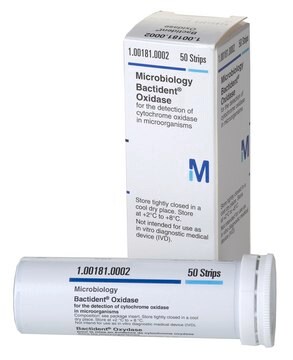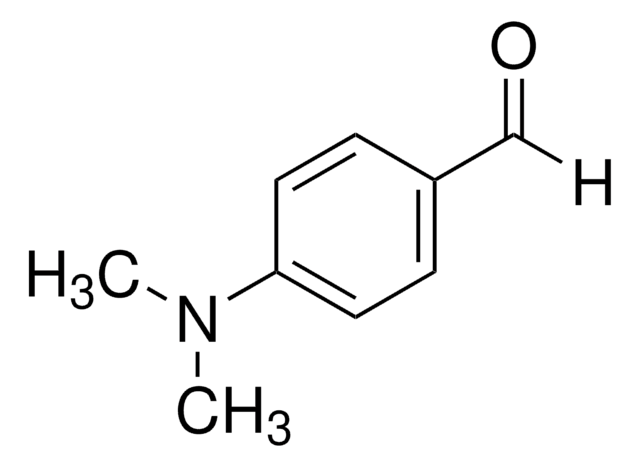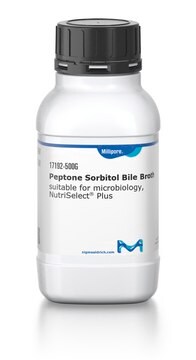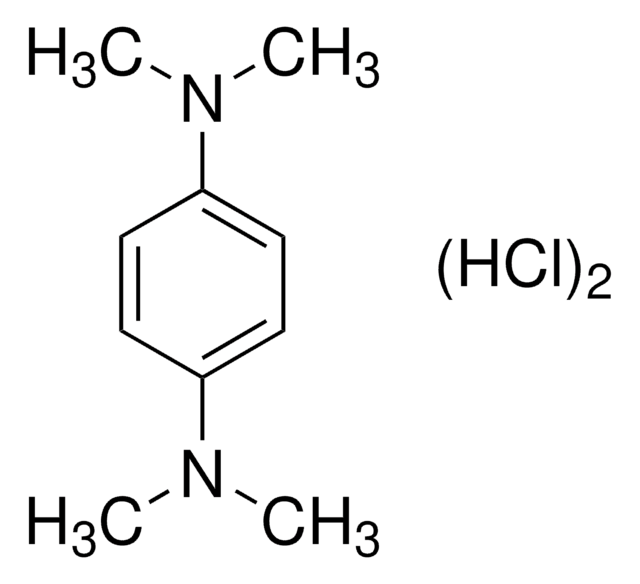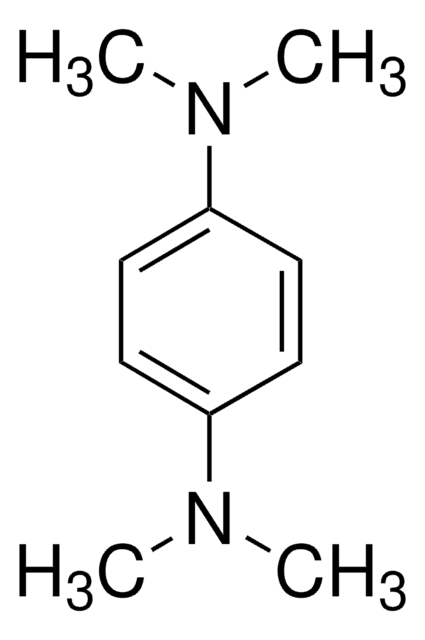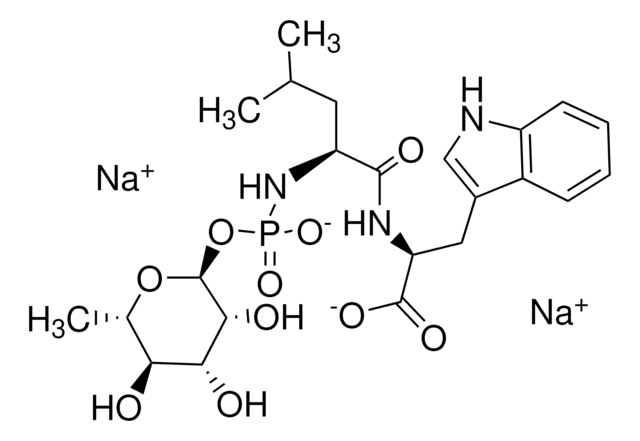Wichtige Dokumente
18502
Oxidasereagens nach Gordon-McLeod
suitable for microbiology
Synonym(e):
Gordon-McLeod Reagens
About This Item
Empfohlene Produkte
Agentur
according to ISO 9308-1:2014
Qualitätsniveau
Produktlinie
BioChemika
Haltbarkeit
limited shelf life, expiry date on the label
Zusammensetzung
N,N-dimethyl-p-phenylenediamine hydrochloride, 0.15 g
water, 10 mL
Verpackung
pkg of 100 mL
Lagerbedingungen
(Tightly closed)
Methode(n)
microbe id | specific enzyme detection: suitable
Wirkungsspektrum von Antibiotika
Gram-negative bacteria
Anwendung(en)
clinical testing
environmental
food and beverages
pharmaceutical
microbiology
Eignung
Plesiomonas spp.
Aeromonas spp.
Neisseria spp.
Pseudomonas spp.
bacteria
Allgemeine Beschreibung
Anwendung
Signalwort
Danger
H-Sätze
P-Sätze
Gefahreneinstufungen
Resp. Sens. 1
Lagerklassenschlüssel
10 - Combustible liquids
WGK
WGK 2
Flammpunkt (°F)
Not applicable
Flammpunkt (°C)
Not applicable
Persönliche Schutzausrüstung
Eyeshields, Faceshields, Gloves
Hier finden Sie alle aktuellen Versionen:
Besitzen Sie dieses Produkt bereits?
In der Dokumentenbibliothek finden Sie die Dokumentation zu den Produkten, die Sie kürzlich erworben haben.
Kunden haben sich ebenfalls angesehen
Artikel
Vibrio Detection
On the Trail of Campylobacter
Chromogenic media enable the selective detection of S. aureus, which produce bluish-green colonies that are clearly differentiated from other species.
For microbiologists the most fundamental stain was developed in 1884 by the Danish bacteriologist Hans Christian Gram.
Protokolle
General guidance for the detection and enumeration of Enterobacteriaceae in food according to EN-ISO 8523:1991 and EN-ISO 4832:1991, respectively.
In recent years it has been recognized that Listeria is an important public health problem. The disease affects primarily people of advanced age, pregnant women, newborns, and adults with weakened immune systems.
Unser Team von Wissenschaftlern verfügt über Erfahrung in allen Forschungsbereichen einschließlich Life Science, Materialwissenschaften, chemischer Synthese, Chromatographie, Analytik und vielen mehr..
Setzen Sie sich mit dem technischen Dienst in Verbindung.
